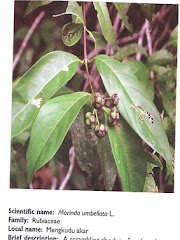Warfare Tactical_/Counter Insurgency Warfare_ in Forest stand
CIW
1.defence
2.ambush
3.moving
4.attack
in the forest stand...
without we know the enemy will come from which direction in the surrounding of the forest standthis tactic also known as guerilla tactical...
Jungle warfare is a term used to cover the special techniques needed for military units to survive and fight in jungle terrain.
It has been the topic of extensive study by military strategists, and was an important part of the planning for both sides in many conflicts, including World War II and the Vietnam War.
The jungle environment has a variety of effects on military operations. Dense vegetation can limit lines of sight and arcs of fire, but can also provide ample opportunity for camouflage and plenty of material with which to build fortifications.
Jungle terrain, often without good roads, can be inaccessible to vehicles and so makes supply and transport difficult, which in turn places a premium on air mobility. The problems of transport make engineering resources important as they are needed to improve roads, build bridges and airfields, and improve water supplies.
Jungle environments can also be inherently unhealthy, with various tropical diseases that have to be prevented or treated by medical services. Likewise the terrain can make it difficult to deploy armoured forces, or any other kind of forces on any large scale. Successful jungle fighting emphasises effective small unit tactics and leadership.
World War Two
The real pioneers who methodically developed it as a specialized branch of warfare - the unconventional, low-intensity, guerrilla-style type of warfare as it is understood today - were probably the British. Examples of such early jungle-warfare forces were the Chindits, f Force and Force 136, who were small bodies of soldiers, equipped with no more than small arms and explosives, but rigorously trained in guerrilla warfare-style tactics (particularly in close-quarter combat).
Formed in the later stage of the Pacific War in support of conventional forces, these were the true jungle-warfare experts whose unconventional combat skills and tactics were specially developed for use in the jungle environment. The very beginning of it all probably traces back to immediately after the fall of Malaya and Singapore in 1942.
A few British officers, such as the legendary Freddie Spencer Chapman, eluded capture and escaped into the central Malaysian jungle where they helped organize and train bands of lightly armed local ethnic Chinese communists into a capable guerrilla force against the Japanese occupiers. What began as desperate initiatives by several determined British officers probably inspired the subsequent formation of the above-mentioned early jungle-warfare forces.
Cold War
British experience in the Malayan Emergency
After the war, early skills in jungle warfare were further honed in the Malayan Emergency, when in 1948 W.W.II guerrilla fighters of the Malayan Communist Party (MCP) turned against their In addition to jungle discipline, field craft, and survival skills, special tactics such as combat tracking (first using native trackers), close-quarter fighting (tactics were developed by troopers protected only with fencing masks stalking and shooting each other in the jungle training ground with air rifles), small team operations (which led to the typical four-man special operations teams) and tree jumping (parachuting into the jungle and through the rain forest canopy) were developed to actively take the war to the Communist guerrillas instead of reacting to incidents initiated by them.
Of greater importance was the integration of the tactical jungle warfare with the strategic "winning hearts and minds" psychological, economic and political warfare as a complete counter-insurgency package. The Malayan Emergency was declared over in 1960 as the surviving Communist guerrillas were driven to the jungle near the Thai border, where they remained until they gave up their armed struggle in 1989.
Cuban Revolution and Che Guevara
Main article: Cuban Revolution
Vietnam War
The British experience in counter insurgency was passed onto the Americans during their involvement in the Vietnam War,[1] where the battlegrounds were, again, the jungle. Much of British strategic thinking on counter-insurgency tactics in a jungle environment was passed on through BRIAM (British Advisory Mission) to South Vietnam headed by Sir Robert Thompson, a former Chindit and the Permanent Secretary of Defense for Malaya during the Emergency).[2]
The Americans further refined jungle warfare by the creation of such dedicated counter-insurgency special operations troops as the Special Forces (Green Berets), Rangers, Long Range Reconnaissance Patrols (LRRP) and Combat Tracker Teams (CTT).
During the decade of active US combat involvement in the Vietnam War (1962-1972), jungle warfare became closely associated with counter insurgency and special operations troops.
However, although the American forces managed to have mastered jungle warfare at a tactical level in Vietnam, they were unable to install a successful strategic program in winning a jungle-based insurgency war.[3][4][5] Hence, the American military lost the political war in Vietnam even though U.S. forces, especially special operations troops, won almost every major military battle against the Viet Cong guerrillas and the North Vietnamese Army.
Training in the jungle
With the end of the Vietnam War, jungle warfare fell into disfavor among the major armies in the world, namely, those of the US/NATO and USSR/Warsaw Pact, which focused their attention to conventional warfare with a nuclear flavor, to be fought on the jungle-less European battlefields.
US special operations troops that were created for the purpose of fighting in the jungle environment, such as LRRP and CTT, were disbanded, while other jungle-warfare-proficient troops, such as the Special Forces and Rangers, went through a temporary period of decline, until they found their role in counter-terrorism operations in the 1980s.
Central American Crisis
Main article: Central American Crisis
Please help improve this article by expanding it. Further information might be found on the talk page. (December 2009)
Development after the Cold War
The collapse of USSR in the early 1990s marked the beginning of the end of a number of proxy wars fought between the superpowers in the jungles of Africa, South America and Southeast Asia. In the euphoria at the end of the Cold War, many Western nations were quick to claim the peace dividend and reinvested resources to other priorities.
Jungle warfare was reduced in scope and priority in the regular training curriculum of most conventional Western armies.[6] During this time, the nature of major military operations in the Middle East and Central Asia saw the need to put an emphasis upon desert warfare and urban warfare training - in both the conventional and unconventional warfare models.
Conflicts in Colombia, Ecuador and Peru
Main articles: Colombian armed conflict (1964–present), Internal conflict in Peru, and Cenepa War
Please help improve this article by expanding it. Further information might be found on the talk page. (December 2009)
Jungle units
At present the following armies have specialised jungle units or Jungle Troops:
• Argentina Cazadores del Monte
• Brazilian Army has four Jungle Infantry Brigade: 1st, 16th, 17th and 23rd Jungle Infantry Brigades and others units, divided in two division, and Jungle Warfare Training Center (CIGS).
• British Army has a Gurkha Battalion stationed in Brunei, where it can maintain jungle skills. Army infantry and Royal Marine units routinely attend courses and training.
• Colombia Brigada de Fuerzas Especiales
• France has the 3rd Foreign Infantry Regiment of the French Foreign Legion, based in Camp Forget, Kourou, Guyane and various jungle postings.
• The Indian Army maintains an elite Counter Insurgency and Jungle Warfare School which is used to train domestic and foreign units in methods for countering irregular warfare.
• Malaysian Royal Ranger Regiment
• The Netherlands the Korps Commandotroepen and the Netherlands Marine Corps are jungle trained
• Philippine Army Scout Rangers and Philippine Army Special Forces
• USA Special Forces ("Green Berets"), Rangers, Long Range Reconnaissance Patrols (LRRP) and Combat Tracker Teams (CTT).
• Suriname "korps speciale troepen"
Notes
1. ^ Bob Horton (The Vietnam Center, Texas Tech University), "The Use of the British Resettlement Model in Malaya and Vietnam" paper presented at the Texas Tech University 4th Triennial Vietnam Symposium, held at the Lubbock Civic Center, 11-13 Apr. 2002.
2. ^ Edward Reynolds Wright, Jr, Review of No Exit From Vietnam by Sir Robert Thomson (New York: David McKay Co., Inc., 1970), in The American Political Science Review, Vol. 65, No. 4 (Dec., 1971) pp. 1232-1234.
3. ^ Master Sergeant James Donovan, USMC (ret.), "Marine Alternative to Search and Destroy," article, in Historynet.org and Leatherneck.com, 2004.
4. ^ Major Frank D. Pelli, USMC, "Insurgency, Counterinsurgency, and the Marines in Vietnam," article, in GlobalSecurity.org, 1999.
5. ^ General Sir Mike Jackson, British Army, "The Principles of British Counterinsurgency," audio file, in Hearts and Minds: British Counter Insurgency from Malaya to Iraq, Kingston University FASS Conference, held at RUSI, Whitehall, London, 21 Sep. 2007.
6. ^ David Abel, "Closing Prized Jungle Warfare Base," in The Christian Science Monitor, 3 June 1999.
References
Books and Articles
Barber, Noel. The War of the Running Dogs: How Malaya Defeated the Communist Guerrillas, 1948-60. London: Orion Publishing Group/Cassell Military Paperbacks, 2005.
Baudrier, Michael, 'Love & Terror in Malaya,' (ISBN 1-4120-5171-1) Trafford Publishing, 2005.
Chapman, Spencer. The Jungle is Neutral. Guilford, CT: Lyons Press, 2003. (First published by Chatto & Windus in 1949.)
Forty, George, Japanese Army handbook 1939-1945. Stroud, Gloucestershire: Sutton Publishing, 1999.
Marchall, Brig. Gen. S. L. A. and Lt. Col. David H. Hackworth. "Vietnamprimer: Lessons Learned." Headquarters, Department of the Army, U.S. Army, 1966 (?). (Published on the Internet at: http://www.geocities.com/equipmentshop/vietnamprimer.htm.)
Taber, Robert. War of the Flea: Classic Study of Guerrilla Warfare. London, Granada Publishing Ltd., 1965.
أَلَمْ تَرَ أَنَّ اللَّهَ يُسَبِّحُ لَهُ مَنْ فِي السَّمَاوَاتِ وَالأرْضِ وَالطَّيْرُ صَافَّاتٍ كُلٌّ قَدْ عَلِمَ صَلاتَهُ وَتَسْبِيحَهُ وَاللَّهُ عَلِيمٌ بِمَا يَفْعَلُونَ Tidakkah kamu tahu bahwasanya Allah: kepada-Nya bertasbih apa yang di langit dan di bumi dan (juga) burung dengan mengembangkan sayapnya. Masing-masing telah mengetahui (cara) solat dan tasbihnya, dan Allah Amat Mengetahui apa yang mereka kerjakan. an-Nur:41
Tazkirah
Sami Yusuf_try not to cry
mu'allim Muhammad Rasulullah Sallallahu alaihi waSalam
ummi_mak_mother_ibu_Sami Yusuf
zikir Tok Guru Nik Abdul Aziz Nik Mat Mu'allimul Mursyidi
syeikh masyari afasi
ruang rindu
song
Arisu Rozah
Usia 40

Mudah mudahan diluaskan rezeki anugerah Allah
usia 40 tahun

UPM
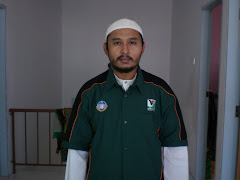
Kuatan Pahe Darul Makmur
pemakaian serban semsa menunaikan solat_InsyaAllah ada sawaaban anugerah Allah
Rempuh halangan
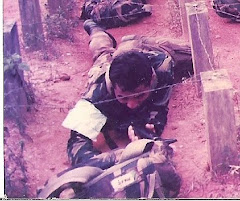
Abah_menyokong kuat oengajian Ijazah UPM

usia 39 tahun

usia 23 tahun_UPM
An_Namiru

Ijazah Pengurusan Hutan UPM
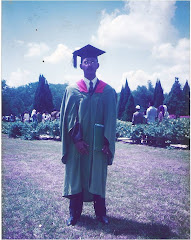
General Lumber_Nik Mahmud Nik Hasan

Chengal

Tauliah

Semasa tugas dgn general lumber

PALAPES UPM

UPM

Rumah yang lawa

Muhammad_Abdullah CD
semasa bermukim di Kuatan Pahe Darul Makmur
Ijazah

air terjun

Borneo land

GREEN PEACE
GREEN PEACE
Kelang

Ahlul Bayti_ Sayid Alawi Al Maliki

Asadu_ Tenang serta Berani

atTiflatul Falasthiniin

Sayid Muhammad Ahlul Bayt keturunan Rasulullah

AnNamiru_SAFARI_Kembara

AnNamiru_resting
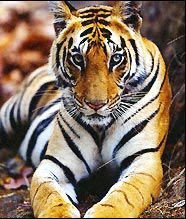
Hamas

sabaha anNamiru fil nahri

Namir sedang membersih

Tok Guru Mualimul_Mursyid

An_Namiru
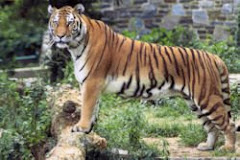.jpg)
Namir_istirehat
.jpg)
SaaRa AnNamiru fil_Midan
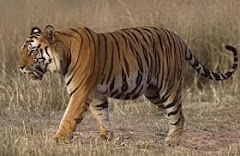.jpg)
Renungan Sang Harimau_Sabaha AnNamiru
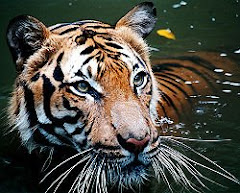.jpg)
Syaraba AnNamiru Ma_A
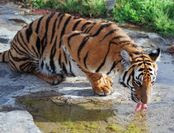.jpg)
AnNamiru_Riadhah
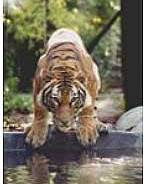.jpg)
AnNamiru_Riadhah
.jpg)
AnNimru ma_A waladuha
Namir fil_Ghabi (sebut Robi...
Namir

AdDubbu_Beruang di hutan

Amu Syahidan Wa La Tuba lil_A'duwwi

AsSyahid
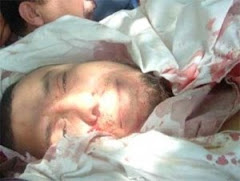
Namir

Tangkas
najwa dan irah

sungai

najwa

najwa

Kaabatul musyarrafah

unta

Jabal Rahmah

masjid nabawi

masjid quba

dr.eg

najwa dan hadhirah

along[macho]
![along[macho]](https://blogger.googleusercontent.com/img/b/R29vZ2xl/AVvXsEjuMi7D33CmR0_KXrCW2XigfLcUuQurcvtqOS139ncCwEzCyB-jUopk7QK7anADIenJEm2S0N6gAY1ubnACYXewgiAsI3rBjnLTawM39alLL-rEopOoVqn0w5WpLhPJH3hrXNtchEhgtyaI/s240/P7150023.JPG)
harissa dan hadhirah

adik beradik
Tongkat Ali

Tongkat Ali
herba kacip Fatimah
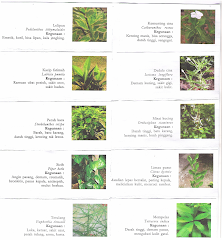
herba Kacip Fatimah
hempedu beruang
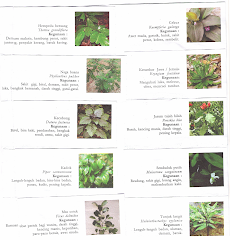
hempedu beruang
hempedu bumi

hempedu bumi
herba misai kucing

herba misai kucing
herba tongkat Ali
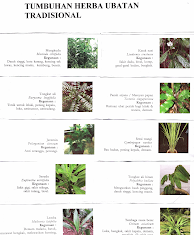.png)
Tongkat Ali
Ulama'

Ulama'
kapal terbang milik kerajaan negara ini yang dipakai pemimpin negara

kapal terbang
Adakah Insan ini Syahid

Syahid
Tok Ayah Haji Ismail

Saifuddin bersama Zakaria

Dinner....
Sukacita Kedatangan Tetamu
Pengikut
Kalimah Yang Baik

Ubi Jaga

Ubi Jaga
Arkib Blog
Burung Lang Rajawali

Chinese Sparrowhawk
Kelicap Mayang Kelapa
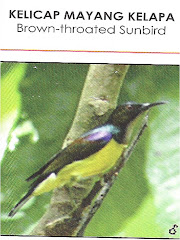
Brown-Throated Sunbird
Kopiah

Pokok Damar Minyak

Kacip Fatimah
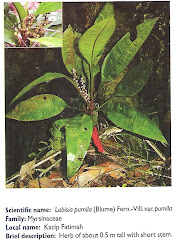
Mengkudu Akar
